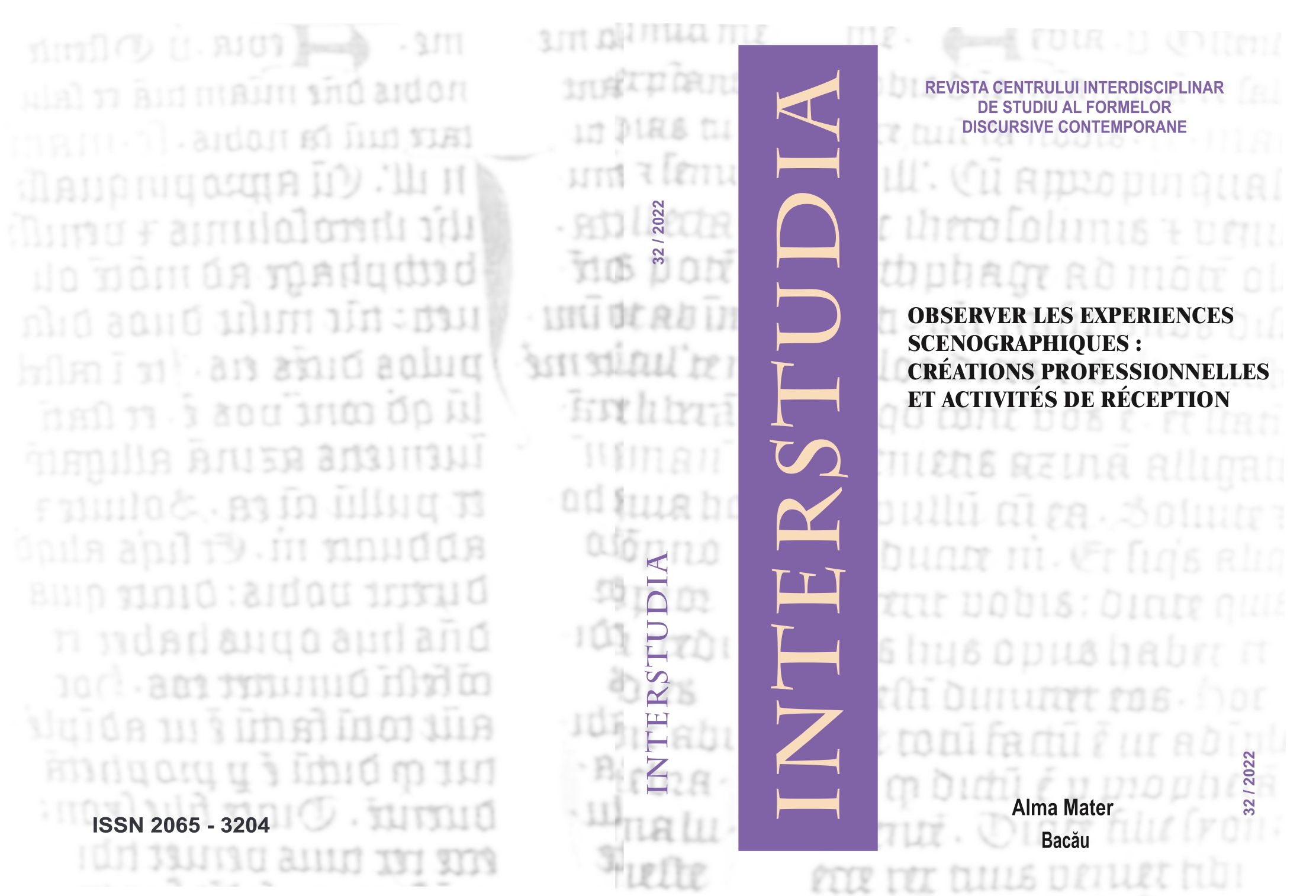REPRÉSENTATIONS SCÉNOGRAPHIQUES : DE LA MUTATION SPATIALE
À LA MUTATION SOCIALE
SCENOGRAPHIC REPRESENTATIONS: FROM SPATIAL MUTATION
TO SOCIAL CHANGE
Author(s): Belghith NawelSubject(s): Fine Arts / Performing Arts, Visual Arts, Sociology of Art
Published by: Editura Alma Mater
Keywords: scenography; space; mutation; spectator; actor;
Summary/Abstract: The success of ephemeral scenographic event representations is partly explained by the capacity of the event to touch the spectator and to immerse him in a multisensory experience likely to awaken and appeal to his senses. The scenographic representation offers the spectator the possibility of experiencing the urban space in a different and plural way. This multisensory perception of the place of performance offers a new vision of space. The spectator realizes an association between the real space and the space perceived through his senses. By combining time, space and act, the spectator perceives the scenographic event space as a cognitive act that deepens 94his understanding of his ephemeral spatial environment. In other words, ephemeral event creation makes it possible to interpret the place and design the space differently (Eisenstein, 2007). Indeed, through the process of perception and identification, the spectator constructs a mental image of a temporary reality and is part of a process of physical and symbolic transformation of the place of the installation. This multisensory process upsets the viewer's relationship with the space and permanently modifies the social space. We will focus in this article on the study of the multisensory experience of the spectator in the scenographic representation by taking the example of the Festival of Lights in Lyon in 2019 and that of the Immersive Art Festival which took place in Paris in October 2019. We will first seek to highlight the perceptual-active process and the relationship between the viewer and the space. Secondly, we will illustrate the extent to which walkable scenography is capable of mutating space spatially and socially. Finally, we will demonstrate the influence of the perceptions that the individual may have on the very existence of space.
- Issue Year: 2022
- Issue No: 32
- Page Range: 93-102
- Page Count: 10
- Language: French
- Content File-PDF

